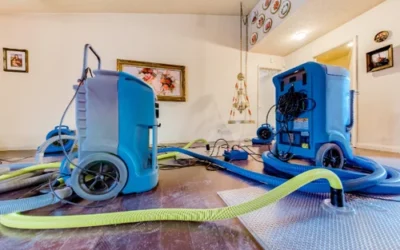Home Service Innovations: What to Expect in the Coming Years

The home service industry is undergoing a significant transformation driven by technological advancements, shifting consumer expectations, and a heightened focus on convenience and sustainability. From AI-powered cleaning robots to smart maintenance systems and digital platforms for all packing and moving needs, the way homeowners engage with service providers is evolving at a rapid pace. As we look ahead, several key trends and innovations are poised to redefine how home services are delivered and experienced.
The Rise of Smart Home Integration
Smart home technology is already transforming households, and its integration with home services is the next frontier. Devices like smart thermostats, doorbell cameras, and security systems are being enhanced to work alongside service providers. For example, smart locks can grant temporary access to cleaners or technicians, eliminating the need for homeowners to be physically present.
The future holds even more advanced integrations. Imagine your HVAC system notifying a maintenance company automatically when a filter needs replacement or your refrigerator scheduling a service appointment when it detects a fault. These proactive systems will not only save time but also reduce the risk of costly repairs by addressing issues early.
AI and Robotics in Home Services
Artificial intelligence is reshaping numerous industries, and home services are no exception. In the near future, AI will be used to analyze data from various home systems to predict maintenance needs and optimize service schedules. This predictive maintenance model will become the norm, increasing efficiency and reliability for homeowners.
Robotics is another major area of innovation. Robotic vacuum cleaners and lawnmowers are just the beginning. The coming years will see a rise in multi-functional home robots capable of performing various tasks such as window cleaning, pool maintenance, and even minor repairs. These machines will be powered by AI, allowing them to learn and adapt to their environment for improved performance over time.
On-Demand and Subscription-Based Models
Convenience is a top priority for modern consumers, and home service providers are adapting by offering on-demand and subscription-based services. These models allow homeowners to access services quickly without long-term commitments or scheduling hassles. Whether it’s a one-time deep cleaning, all packing support before a move, or monthly pest control, these flexible options provide greater value and peace of mind.
Subscription-based models are expected to expand further. Homeowners will increasingly turn to bundled services that offer comprehensive care—from plumbing and electrical maintenance to regular landscaping—under a single monthly fee. This trend simplifies budgeting and ensures consistent upkeep of the home.
Eco-Friendly and Sustainable Practices
Sustainability is no longer optional; it’s a necessity. Home service innovations are embracing eco-friendly practices to reduce their environmental impact. Cleaning companies are adopting non-toxic, biodegradable products, while landscaping services are shifting toward electric equipment and water-saving technologies.
All packing services, in particular, are undergoing a green revolution. Traditional moving materials like plastic wrap and styrofoam are being replaced with recyclable or reusable alternatives. Companies are offering eco-conscious options such as biodegradable boxes, recycled paper cushioning, and reusable containers, aligning their services with the growing demand for sustainable solutions.
Digital Platforms and Enhanced Customer Experience
Digital transformation is central to the evolution of home services. Mobile apps and online platforms now enable customers to book appointments, track service progress, and make payments with ease. In the coming years, these platforms will become even more sophisticated, leveraging AI to personalize recommendations, send reminders, and provide instant customer support through chatbots.
Enhanced customer experience will be a key differentiator. Augmented reality (AR) and virtual consultations are becoming popular tools, especially for services like interior design, remodeling, and custom installations. These technologies allow customers to visualize the outcome before committing, leading to better decision-making and satisfaction.
Contactless Services and Remote Monitoring
The COVID-19 pandemic accelerated the demand for contactless services, a trend that’s here to stay. Home service providers are incorporating remote diagnostics, virtual consultations, and minimal-contact workflows into their standard offerings. Technicians can now guide homeowners through basic troubleshooting steps via video calls, reducing the need for in-person visits.
Remote monitoring systems are also gaining traction. These systems can oversee everything from water leaks to energy usage and automatically alert service providers when anomalies are detected. As this technology becomes more accessible, more homeowners will adopt it to safeguard their property and optimize energy consumption.
The Future of All Packing Services
Among the most rapidly evolving segments of home services is all packing, especially in the context of moving, storage, and relocation. Gone are the days of haphazardly packing boxes with little organization. Today’s packing services are streamlined, tech-enabled, and customer-centric.
In the future, we can expect even greater innovation in this space. Smart inventory tracking will allow customers to keep a digital record of every item packed, its condition, and its location in transit. Barcode or QR code systems will help ensure no items are lost or misplaced during a move. AI-powered logistics platforms will optimize routing and timing, reducing costs and delays.
Moreover, all packing services will increasingly include add-ons like unpacking, setup, and waste removal to deliver a seamless experience from start to finish. Companies will focus on delivering convenience, reliability, and transparency, giving customers complete control over their move with minimal stress.
Skilled Workforce and Training Innovations
As the demand for sophisticated home services grows, so does the need for a skilled and knowledgeable workforce. In the coming years, training and certification programs will evolve to include advanced technical skills, digital literacy, and customer service excellence. Providers will invest more in ongoing education to keep their employees up to date with the latest tools and techniques.
Virtual reality training modules, simulation environments, and online certifications will become common. These innovations not only enhance service quality but also empower workers with the skills needed to operate complex equipment or software used in modern home servicing.
Conclusion
The home service landscape is transforming before our eyes. Innovations across smart technology, AI, robotics, digital platforms, and eco-conscious practices are reshaping the way services are delivered and experienced. For consumers, these changes promise a future of greater convenience, efficiency, and customization.








